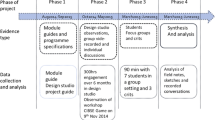Abstract
Jeffrey Smart’s paintings encourage engineers to imagine how technical means join with participative and evaluative criteria for achieving responsive and sustainable engineering. Initially, his use of perfect, other-worldly geometries evokes the productive powers of technical systems. But the presence of everyday people implies that engineering needs to consider a range of evaluative perspectives as well. He therefore encourages engineers to grasp the design-as-agency potentials of the discipline. That is to say, his poetics of technology encourages engineers to imagine how diverse faculties might be drawn into convivial relationships with the ultimate goals of creating another emergent synthesis: that of a sustainable world. At base, his art provides a rare instance of metaphorical and divergent thinking about engineering, not least for sustainability, in visual form.
Note: The (few) paintings not reproduced below may be found online or by consulting the references mentioned in brackets after the title of the painting.
Access this chapter
Tax calculation will be finalised at checkout
Purchases are for personal use only
Similar content being viewed by others
References
Acemoglu, Daren and Robinson, James A. (2013). Why Nations Fail. The Origins of Power, Prosperity and Poverty. London: Profile Books.
Allen, Christopher. (2008). Jeffrey Smart: Unpublished Paintings 1940–2007. Melbourne: Thames and Hudson.
Beck, Ulrich. (1992). Risk Society: Towards a New Modernity. Trans. Mark Ritter. London: Sage Publications.
Ciammaichella, Massimiliano and Menchetelli, Valeria. (2022). Drawing and Design. Declensions of Terms and Practices Actualizations. Disegno, 11(2), 7–13. https://disegno.unioneitalianadisegno.it/index.php/disegno/article/view/474/730. Accessed 18 April 2022.
Dovey, Kim. (1993). Putting Geometry in its Place: Towards a Phenomenology of the Design Process. In David Seamon (Ed.), Dwelling, Seeing, and Designing: Towards a Phenomenological Ecology (pp. 247–269). Albany, NY: State University of New York Press.
Edgerton, Samuel Y. Jr. (1984). Galileo, Florentine “Disegno,” and the “Strange Spottednesse” of the Moon. Art Journal, 44(3), 225–232.
Fischer, Frank. (2017). Climate Crisis and the Democratic Prospect. Participatory Governance in Sustainable Communities. Oxford: Oxford University Press.
Forrest, Reed and Senuik Cicek, Jillian. (2021). Rethinking the Engineering Design Process: Advantages of Incorporating Indigenous Knowledges, Perspectives, and Methodologies. In: Proceedings 2021 Canadian Engineering Association Conference, 20–23 June, 2021. DOI: https://doi.org/10.24908/pceea.vi0.14911. Accessed 2 April 2023.
Fry, Tony. (2019). Design as an Ontological Question. In Anne-Marie Willis (Ed.), The Design Philosophy Reader (pp. 27–29). London: Bloomsbury Visual Arts.
Gordon, Nick. (2020). Jeffrey Smart’s Geometry. Factory Staff , Erehwyna. https://www.theshortcourse.org/blog/blog-post-jeffreysmartgeometry. Accessed October 4, 2022.
Ihde, Don. (1990). Technology and the Lifeworld: From Garden to Earth. Bloomington: Indiana University Press.
Jacobs, Jane. (1961). The Life and Death of American Cities. New York: Random House.
Kutay, Cat and Leigh, Elyssebeth. (2017). Aboriginal Engineering for an enduring civilization. In: Proceedings. Australian Association for Engineering Education 2017 Conference. http://hdl.handle.net/10453/121485. Accessed 5 April 2023.
McGrath, Sandra. (1969). Jeffrey Smart. Art and Australia 7(1), 32–39.
Michaux, Simon. (2022). Discussion: The quantity of metals required to manufacture just one generation of renewable technology to phase out fossil fuels. https://www.youtube.com/watch?v=MBVmnKuBocc&list=LL&index=23&t=2028s. Accessed October 27, 2022.
Molnar, George. (1959). Our engineers did consider many alternatives to cutting down trees, but found them impractical [cartoon]. Sydney Morning Herald, February 6. https://nla.gov.au/nla.obj-147529400/view. Accessed October 4, 2022.
Motycka Weston, Dagmar. (2017). Corporeal Spatiality and the Restorative Fragment in Early Twentieth Century Art and Architecture. In Henriette Steiner and Maximilian Sternberg (Eds), Phenomenologies of the City: Studies in the History and Philosophy of Architecture (pp. 195–210). London: Routledge.
Mumford, Lewis. (1934). Technics and Civilization. New York: Harcourt, Brace and co.
Owens, Kate. (2023). Harnessing the transformative potential of climate governance. The 2023 Iain McCalman Lecture, Sydney Environment Institute, University of Sydney [Video]. Retrieved from https://www.sydney.edu.au/sydney-environment-institute/events/2023/the-2023-iain-mccalman-lecture.html.
Pearce, Barry. (2011). Jeffrey Smart. Sydney: The Beagle Press.
Pottsdam Institute for Climate Impact Research. (2021). Tipping Points for Sustainability Transitions. https://www.youtube.com/watch?v=AAGQHPbsvTY. Accessed May 7, 2021.
Quartermaine, Peter. (1983). Jeffrey Smart. South Yarra: Gryphon Books.
State Library New South Wales. (1941). Fig trees in Domain (taken for AUP) [photograph]. https://collection.sl.nsw.gov.au/record/9O4DXEpn. Accessed October 4, 2022.
Swer, Gregory Morgan. (2003). The Road to Necropolis: Technics and Death in the Philosophy of Lewis Mumford. The History of the Human Sciences, 16(4), 39–59.
Vesely, Dalibor. (2017). Between Architecture and the City. In Henriette Steiner and Maximilian Sternberg (Eds), Phenomenologies of the City: Studies in the History and Philosophy of Architecture (pp. 151–165). London: Routledge.
Author information
Authors and Affiliations
Editor information
Editors and Affiliations
Rights and permissions
Copyright information
© 2024 The Author(s), under exclusive license to Springer Nature Switzerland AG
About this chapter
Cite this chapter
Byrne, G. (2024). Evoking Design-As-Agency for Sustainable Engineering: The Art of Jeffrey Smart. In: Dunmade, I.S., Daramola, M.O., Iwarere, S.A. (eds) Sustainable Engineering. Green Energy and Technology. Springer, Cham. https://doi.org/10.1007/978-3-031-47215-2_15
Download citation
DOI: https://doi.org/10.1007/978-3-031-47215-2_15
Published:
Publisher Name: Springer, Cham
Print ISBN: 978-3-031-47214-5
Online ISBN: 978-3-031-47215-2
eBook Packages: EngineeringEngineering (R0)



